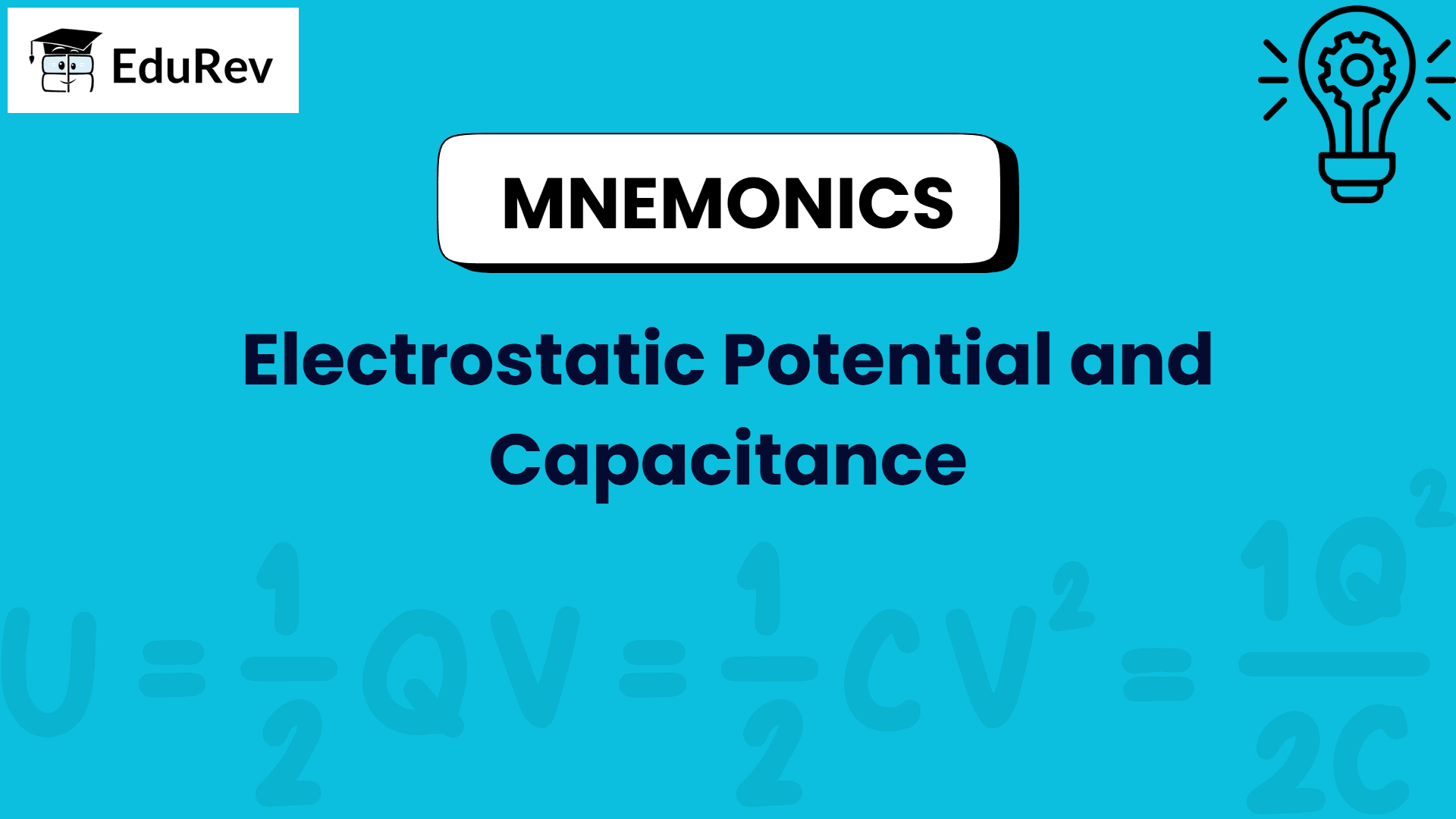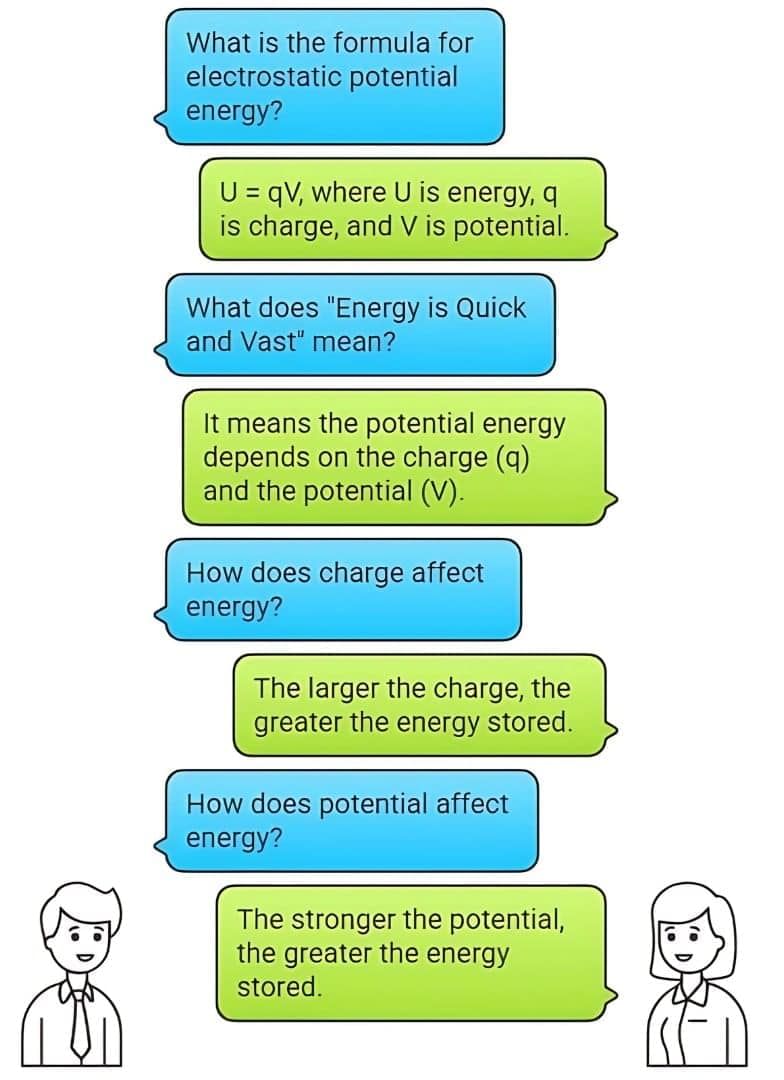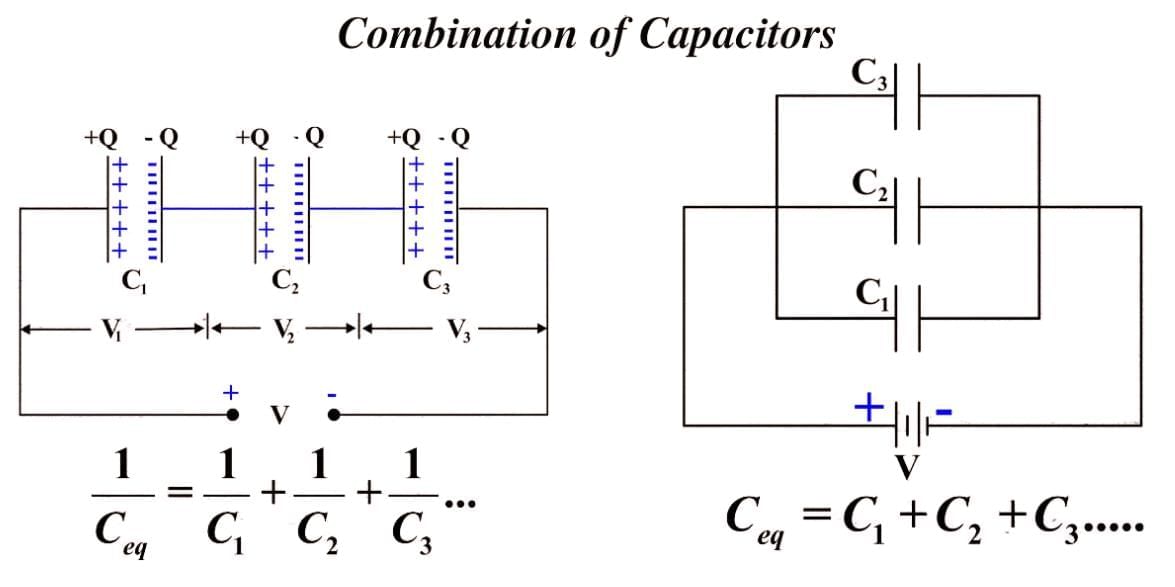Mnemonics: Electrostatic Potential and Capacitance | Physics Class 12 - NEET PDF Download
This document will help you remember important formulas and concepts from Electrostatic Potential and Capacitance in a fun and easy way. Inside, you’ll find mnemonics—memory tricks—that will make it easier to recall during exams.
Whether you are preparing for NEET, a school test, or a quick revision, these mnemonics will save time and boost accuracy. Use them alongside your study material to reinforce learning and increase recall ability.
1. Electrostatic Potential Energy
Formula: U = qV
Mnemonic: "Energy is Quick and Vast"
- q → Charge
- V → Potential
Mnemonic Explanation: The potential energy of a charge in an electric field depends on how much charge (q) is placed, and how strong the potential (V) is at that point. The larger the charge or potential, the greater the energy stored.
2. Work-Energy Relation
Formula: W = qΔV
Mnemonic: "Work is Quiet Difference"
- q → Charge
- ΔV → Potential difference
Mnemonic Explanation: Moving a charge in an electric field requires work. This work is directly proportional to the charge moved (q), and the potential difference (ΔV) across two points. More potential difference = more work required.
3. Capacitance Definition
Formula: C = Q/V
Mnemonic: "Capacitors Quickly Vanish"
- C → Capacitance
- Q → Charge, represented by Q
- V → Potential, represented by V
Capacitance tells us how much charge (Q) a capacitor can hold for a given potential (V). More charge stored at same voltage = higher capacitance.
4. Parallel Plate Capacitor
Formula: C = ε₀A/d
Mnemonic: "Every Area Divides"
- ε₀ → Permittivity of free space
- A → Plate area
- d → Separation
Mnemonic Explanation: Larger area = more capacitance; larger distance = less capacitance.
5. Combination of Capacitors
Mnemonic: "Series are Inverses"
Series: 1/Ceq = 1/C1 + 1/C2 + …
Mnemonic: "Parallel are Plus"
Parallel: Ceq = C1 + C2 + …
Mnemonic Explanation: In series, the effective capacitance is less than the smallest capacitor. In parallel, the effective capacitance is the sum of all capacitors.
6. Dielectric Effect
Mnemonic: "Dielectrics Cut Down Distance"
- Dielectrics → Insulating material placed between plates
- Cut Down → Reduce effective electric field
- Distance → Allows plates to act as if farther apart
Mnemonic Explanation: Adding a dielectric increases capacitance, stores more charge without raising potential, and reduces the effective electric field between plates.
7. Equipotential Surface
Mnemonic: "Equal Work, No Walk"
- Equal → Equipotential (same potential everywhere)
- Work → No work done in moving charge
- No Walk → Charge doesn’t need to climb or fall in potential
Mnemonic Explanation: On an equipotential surface, moving a charge requires zero work because the potential difference is zero. Example: Ground is an equipotential surface (no energy change when moving sideways).
|
74 videos|314 docs|88 tests
|
FAQs on Mnemonics: Electrostatic Potential and Capacitance - Physics Class 12 - NEET
| 1. What is electrostatic potential and how is it defined? |  |
| 2. What is potential difference and how is it calculated? |  |
| 3. How are electric field and potential related? |  |
| 4. What is capacitance and how is it defined? |  |
| 5. What is the energy stored in a capacitor and how can it be calculated? |  |





















